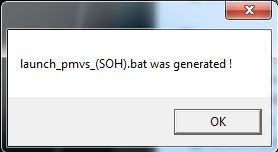Draft Report Layout
-Contents Page
-Text Page
-2 alternate image styled pages (mid chapter and end chapter)

Scanning through the movies has been very time consuming, with no guarantee of good footage so i began to explore alternatives.
Moving on from the idea of gathering all the footage from film, i began looking for youtube videos (HD) and aerial shots on stock footage sites like https://www.videoblocks.com
this is some footage captured of the Statue of Liberty
http://photosynth.net/view.aspx?cid=3ad9b12b-70da-49b2-8730-82d09d20f329
Point Cloud of the Statue of Liberty in MeshLab


Look at:
1. Men in Black Guggenheim (The first scene featuring Will Smith chasing down an alien starts near Grand Central Station, and then he follows the alien up into the white spiral of the Guggenheim Museum. )
2. Statue of Liberty - Will Smith helps deliver a baby alien squid, is actually Liberty Park in Jersey City, opposite the Statue of Liberty.
3. The Lincoln Memorial and National Mall. (Forrest Gump is another such movie which makes good use of landmarks in the Carolinas, Washington DC and Los Angeles as part of the plot. The Lincoln Memorial and the National Mall are famous attractions in Washington DC which have been featured in many movies, including Mr Smith Goes to Washington, National Treasure and Wedding Crashers.Los Angeles landmarks in Forrest Gump include the Santa Monica Pier, Grauman's Chinese Theater and the historic Ambassador Hotel which was demolished in 2006)
4. Dark Knight (Chicago)
5. Vertigo (San Francisco)
6. When Harry Met Sally (New York)
7. Empire State Building which, according to IMDB, has starred in 77 movies, 4 television shows, 3 video games and 8 short films. Empire State Building played pivotal roles include both the 1933 and latest versions of King Kong, An Affair to remember, and Sleepless in Seattle.
http://peeling.hubpages.com/hub/Landmarks-Featured-in-Famous-Movies
Britain's most famous spy, James Bond, generally spends little time in London, other than to receive his orders from his boss 'M'. However, some of the films do feature locations in the city. These include On Her Majesty's Secret Service (1969) in which George Lazenby as Bond visits the College of Arms and For Your Eyes Only (1981), in which Roger Moore experiences a hair-raising helicopter flight over the Docklands area. In the more recent Pierce Brosnan films, the Secret Service's headquarters are identified as being the new MI6 building on the River Thames at Vauxhall. The 1999 film The World Is Not Enough opens with an extended boat chase from the MI6 building down the river to the Millennium Dome, while in Die Another Day (2002) Bond visits a secret base in a disused Underground station, and makes a rare trip to his club Blades. The 1967 version of Casino Royale makes extensive use of London locations, including 10 Downing Street, Whitehall, Trafalgar Square (with Nelson's Column replaced by a flying saucer) as well as the Changing of the Guard outside Buckingham Palace.
Met with Jeremy on Wednesday.
Notes:
talk to Josh about reducing the focus to one landmark on film purely because of the time factor spent scrubbing through films at 8X and then only extracting one still image of a landmark, or a blurry image.
Use a combination of film and stock to produce synth
Develop one landmark to the point of 3D printing (export as .stl)


































